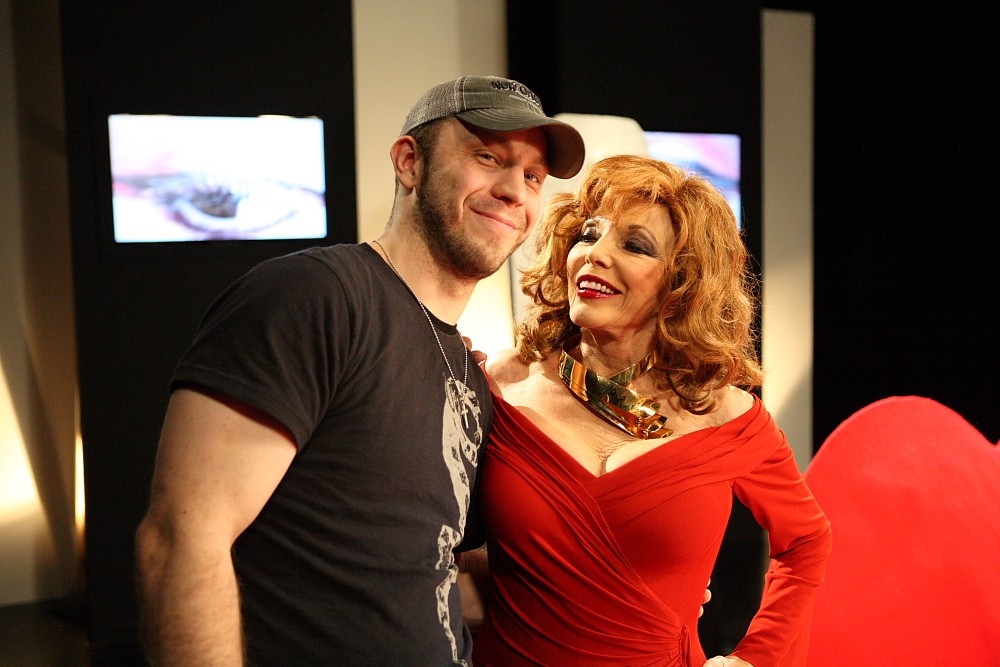We caught up with the brilliant and insightful Matthew Pellowski a few weeks ago and have shared our conversation below.
Matthew, appreciate you joining us today. We’d love to hear about a project that you’ve worked on that’s meant a lot to you.
The most meaningful project and projects I have worked on are the ones where I did not have to compromise anything as an artist when it comes to the creative process. One of the unfortunate ironies of becoming a professional artist (someone who is compensated for their work regularly where it is a full time profession) is you often lose creative control over what you are working on. The “business” of being an artist goes against much of what art should be about and why most individuals pursue it as a career. Even if you are a freelancer you are still beholden to a client, and most clients are their own worst enemy.
For example, when directing or producing a reality television series for a major broadcaster or network, you often become a vessel for executives to carry out horrible creative and incredibly narrow-minded ideas. Most television executives have never actually held a camera, written a script, directed actors, or even have a basic understanding of how the process works, yet they are quick to inject their ideas into a project by giving you strict marching orders.
It’s like the difference of hiring an architect to design a home for you based on some loose guidelines and direction and allowing them to utilize their true skills as engineers and innovators versus treating them like a cartoonist who is there to draw every flawed idea you have verbatim. It’s hiring a carpenter and telling them to hit every nail with the wooden handle side. There is a constant battle of pushing back on not just terrible creative ideas, but also agendas that often go against what you might believe in as a person that are trying to be inserted into “your” work. This becomes a major conflict of interests because there is a misconception that a director or producer has control over the projects they work on. Over the years I have been asked and “strongly encouraged” (meaning I will get fired if I don’t do it) to misrepresent people, create absurd stereotypes, fabricate lies and create controversial story lines in programs being sold as fact, true and “reality.” It’s disheartening because most artists are after truth. When done right, the beauty of film and television is that it is a collaborative effort, but when done wrong there are too many cooks in the kitchen.
As someone who has worked in network television development for close to twenty years now, I have witnessed so many great projects crash, burn, die and fail because artists are often hired and then handcuffed by higher-ups. What starts out as a good idea almost always turns into a Jerry Springer dumpster fire. I’ve directed narrative projects where I was told I could not change a single line of dialogue in scripts that desperately needed massaging. So you get put in a position where you either fall in line or get fired and then blacklisted with a reputation for being “difficult” to work with.
All of this is to provide some context as to why working on two specific projects: “Eyes of the Mothman” and “Robb Ortel’s Art Attack,” immediately come to mind when I think of meaningful projects. EOTM was one of the first documentaries I ever worked on. It was independently funded and I was basically allowed to make the film I wanted to. It’s now well over a decade old and it is by no means a perfect film, it has flaws and might be a bit dated now, but at the time I made the exact film I wanted to make. It was on a controversial subject matter and I felt proud with regard to how I represented the story and the people involved. It was an overwhelming success financially and creatively for me. It played out exactly how I think “art” should, it’s failures and successes were based on the job I did as a filmmaker. The film, despite it having a small budget was sold in Best Buys and retail stores nationwide, and aired internationally and domestically on countless networks, and is still on streaming services today. It achieved a cult following and really became the definitive record on the subject matter. Why it was meaningful to me was because my creative restrictions were only due to a lack of budget and technology at the time, but that still did not prevent it from achieving the overwhelming success that it achieved.
Robb Ortel’s Art Attack is a project I have worked tirelessly on where I basically stood my ground creatively for years, risking commercial success at the cost of creative integrity. The project was brought to me by a friend and at first we tried to solicit and shop it around to networks in a more traditional fashion. What I enjoyed about the show’s premise was it’s simplicity. A talented artist is going to try his hand at some of the most dangerous, rare and unique art forms to see if he can master them. It was a sort of “Dirty Jobs” for the art world, or much like the late Anthony Bourdain’s “No Reservations,” only driven by art. When we pitched it around every American executive wanted to strip the show of what made it good, they wanted to turn it into a game show, make it schlocky, inject agendas and decisions for the wrong reasons. We eventually made season one independently through private investors, sponsors, with product placement deals and grants. Much like EOTM, I was able to create the show I wanted having only the restrictions of budget and time. We released season one on a variety of streaming platform which eventually caught the eye of an international production company who we partnered with to make season two with a sizeable budget. This project is and has been meaningful to me because it’s an example of trusting yourself and not compromising your vision and ultimately reaping the rewards of long hours, sacrifices and taking on major financial risks. We could have easily taken some bad network deal on this project, made quick easy money, have had them ruin the create integrity of the show and it would be just another TV series that came and went. Holding out and holding onto our creative virtues has allowed us to now have the best of both worlds, a proper international budget with zero creative restrictions.
As I write this I realize I should also mention a recent podcast project where the same would apply. I was fortunate to be part of a podcast where creatively there were no restrictions, it’s called Listen to Your Art and can be found at www.listentoyourartpod.com or on any major podcast streaming service / site. That is another meaningful project where I am proud of the project and the creative liberties I was afforded as an artist.
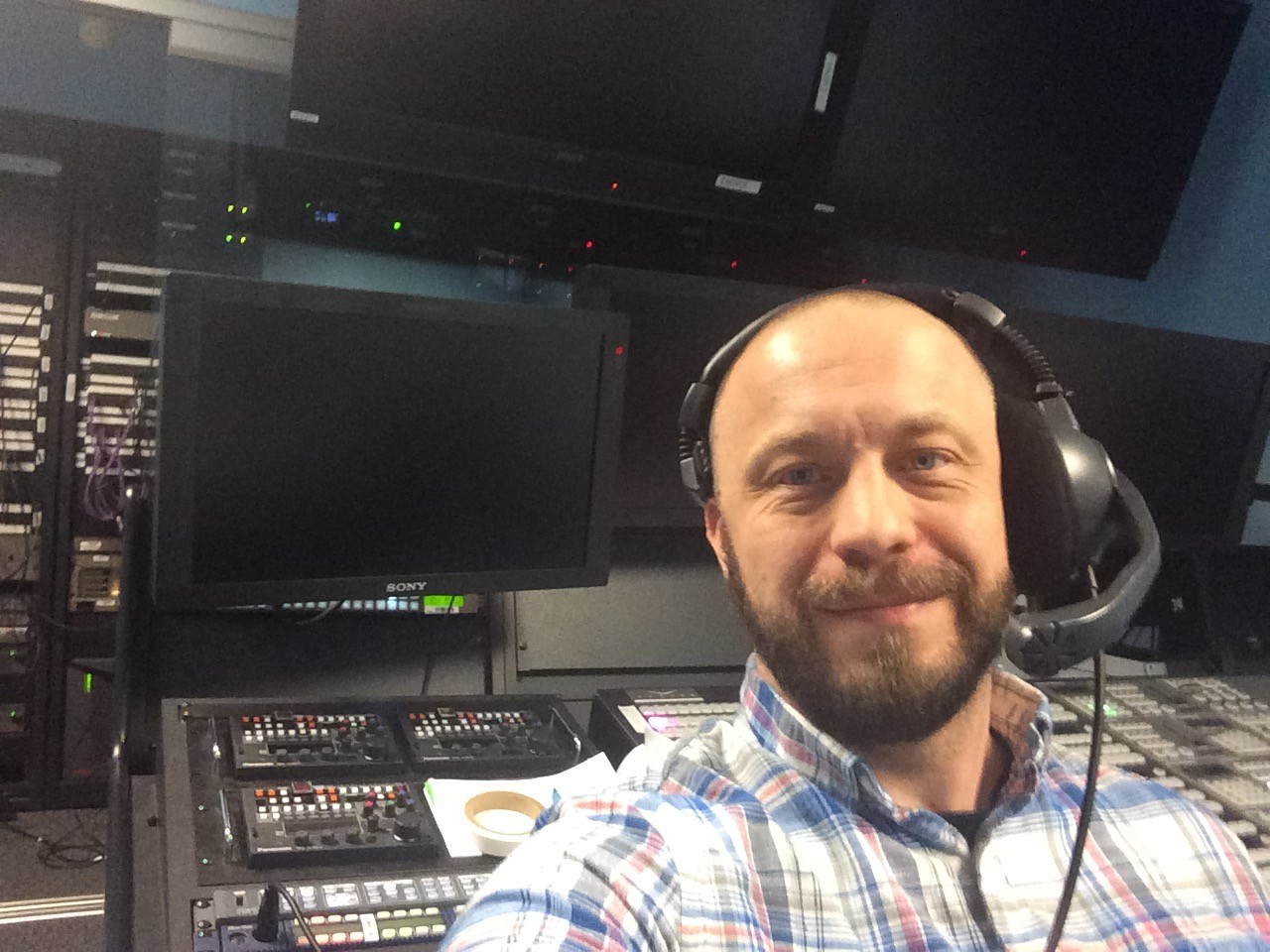
Matthew, love having you share your insights with us. Before we ask you more questions, maybe you can take a moment to introduce yourself to our readers who might have missed our earlier conversations?
When I look back at the work I have created and the accomplishments I have achieved over two decades of being a working artist it really is an unbelievable story. In addition to being a director, producer and editor, I helped create the production and post company Red Line Studios, Inc in NYC. That company was started from nothing, no trust funds, working capital or bank loans, just two young artists (my wife Anastasia and I) wanting the freedom of working for ourselves.
When I was a kid I was always a talented artist, I could draw well, enjoyed writing, and I came from a family of artists and people who were driven and hard working. My father was a writer and my mother was someone who never stopped and was always on the go and juggling multiple things as once. I think I get my creativity from my dad and my work ethic from my mom. However, I never really wanted to pursue the arts as a career, I actually wanted to be a farmer because I spent a lot of time as a kid on a dairy farm in Franklin, New Jersey where my grandparents lived.
When I was a young teenager my older brother Morgan, who was just a 22 year old actor and playwright, died tragically in a car accident. It was an event that would greatly shape my own life and the decisions I made thereafter. I was filled with an overwhelming sense of anger and rage and I decided then to have that fuel my work. Whereas many people in similar situations might turn to drugs or alcohol to heal themselves, I challenged myself and used my brother’s passing as a driving force to accomplish impossible things. I was a published illustrator before I turned 18, started working as a freelance journalist for a variety of magazines at age 20, was a scholar athlete in junior college and even thought about pursuing a career as a baseball or basketball player, but found my love for cinema and filmmaking while attending community college in New Jersey.
One other major event happened to me at young age that brought me to film as a career path. I walked into a movie theater and saw Terrence Malick’s “The Thin Red Line.” That film, in conjunction with my brother’s passing shortly before, is how I ended up working in media. I saw hidden within that film, an exploration and philosophical catharsis of someone who had endured the exact same experience I had with regard to losing a brother. The film is a war epic, and I can’t really explain it as clearly as I would like to, but I knew whoever made this film had gone through the exact same experience I had. It was almost like a personal encoded message and it hit me like a ton of bricks. The power of art, and more specifically the medium of film was never more evident to me, and so it became my obsession.
I eventually decided to pivot away from sports to pursue a life as an artist. I did however, approach this new career path much like an athlete does a sport. It became my everything, I studied, ate, breathed and slept film. I started making my own short films with friends and taking classes at Raritan Valley Community College before getting accepted into the prestigious School of Visual Arts film program in NYC in the early 2000’s. There I met my partner in life, crime, business and love, Anastasia.
When film school ended, Anastasia and I started a small production company called Red Line Studios, a homage to the Malick film. We grew this company over years, working tirelessly 7 days a week, 16 hour days, making endless mistakes, taking on side hustles for shows like Late Night with Conan O’Brien, Spike Lee, ESPN, The Apprentice and anything that would come our way. We would both freelance on shows and larger productions while getting our own company off the ground. We took every job we could get our hands on, I remember at one point I think I was working on 5 different shows at once. This went on for about 5 years before we both decided to quit whatever freelance work we were doing to dedicate 100% attention to Red Line.
We were operating out of a building in Sunset Park Brooklyn for about 8 years before deciding to move our offices to Manhattan. That move brought us a slew of new clients from the west coast as well as internationally because the reality is no one outside of New York wants to travel far from Manhattan to do a production. Even today, going to Brooklyn, Queens or New Jersey is a major turn off to west coast and international clients so as they say, location is everything.
We started out with half a floor in the financial district of Manhattan and it was not that long after 9/11 so real estate was affordable. Little by little we started to grow our company and expand, we started with production services and then added post, eventually we took over an entire floor in our building and then a second. It was just a snowball effect. Every job we did we invested the profit into more equipment, services and amenities. We built sound stages, green screen studios, vocal booths, color correction suites, edit rooms and everything we were sick of renting ourselves from outside companies. Being independent filmmakers we learned what services in our industry are often inflated, wasteful and unnecessary and rolled that into our own philosophy of being a one-stop-shop. Our goal was to essentially become a smaller east cost version of what Robert Rodriguez was doing out in Texas. We wanted to be artists who own their own gear, have their own lights, cameras, studios and stages, and not just offer them to outside clients but utilize them for our own productions. We look at ourselves as artists who own a business, not business owners who operate within a space we don’t understand.
Our long term goal has always been to become self sufficient- create productions of our own that we can retain the rights to, creatively control and work on. It’s rare that Anastasia and I don’t work directly even on outside client’s productions. We are heavily invested in every project that has our company name on it. It’s a quality approach, not quantity. When you hire our company you are hiring us. That saying you have to separate business from personal doesn’t apply here. Our company is us, it’s an extension of our soul. Our blood sweat and tears are the foundation.
We have really become known for our editorial work, television development and being a company that takes risks and plays by their own rules. Everything is a constant risk and a gamble. We have been able to stay alive through so many things; writers strikes, Covid-19 closures, unforeseen disasters and the general constant obstacles that come with operating in New York by being versatile. When our sound stage rentals are slow the post production and vocal booths pick up the slack, when productions are infrequent our podcast room carries the weight. We have enough resources and services under one roof that we always manage to stay afloat while so many competing companies and larger entities go under. We have outpaced and survived beyond many of our competitors because they often become “too big”, don’t stay in their lane, or simply provide an inferior product because there is not that personal care and attention given to a project. Most companies we know are not structured like ours, the owners are very removed from the day to day operations and lack the care and personal investment we offer our clients. Whether it’s something as simple as a sound stage rental or as involved as a 12 episode series we’re producing, we treat both scenarios with the same level of respect.
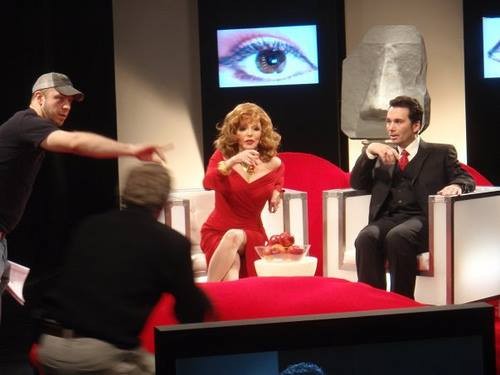

In your view, what can society to do to best support artists, creatives and a thriving creative ecosystem?
There needs to be more communication, attention and a clearer understanding of the importance of the arts. The biggest thing most artists need is funding. Art seems to be dwindling in terms of it’s involvement and inclusion within the school system. As a country, the United States does not support the arts like other countries do from my experience with working abroad. There is too much red tape here when it comes to funding, even when it comes to the non-profit sector. Art is not respected here in this country as much as entertainment is. When I was working in China you would often travel to regions and one of the first thing locals want to tell you about is what art form originates from the area, whether it be pottery, ceramics, sculpture, jade carving, or performing arts. Conversely, I remember we were filming a body painter in New York City once and a crowd was gathering outside the business window storefront because there was s nude model. After a few minutes a bystander peaked his head inside the front door and said “Oh man it’s art” in an incredibly disappointed tone and the crowd grumbled and disbursed. They had hoped it was some kind of porn shoot. Art used to be one of the pillars of a strong, intelligent and successful society and I think we are witnessing the authenticity of that statement with the current decline of both in America.
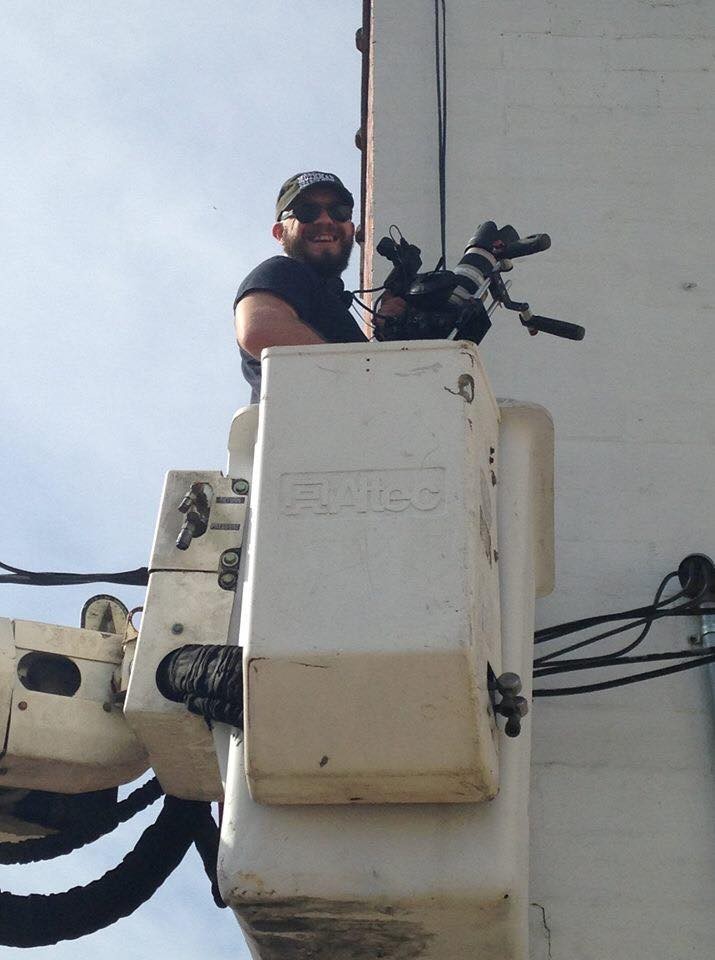

What’s the most rewarding aspect of being a creative in your experience?
I have lived my life by my own rules. I dictate my work ethic, my schedule, my dress code, I don’t ask for sick days or vacation time. They often say being your own boss means you are either lazy or you work too much. I have mostly worked too much but lately I have found a better balance. When I talk to people with “normal” jobs I just can’t relate to the idea of working for someone or working in a place with an “HR” department. These people often seem like prisoners to me, foreign and unrelatable with how they work and even how their relationships with their husbands and wives play out. They use language like “I had to ask for permission for” or “I need to see if I can do this.” Being an artist is a blessing and a curse. I don’t view it as a job but more of a lifestyle. Artists don’t work a 9-5, you never punch out or even retire. I remember interviewing a famous musician in his 90’s and I asked him why he doesn’t retire from working on the road and touring and he said “because I would die.” He meant that literally. It’s a bizarre and strange life, you usually have no job security, often live on edge and stressed, are critical of everything you do but it’s a trade off. I suppose the other rewarding thing is not many people are able to pull this off so it goes back to my competitive nature of being an athlete. What I have always enjoyed about this is you cannot be mediocre at your job and have success here in this space. Well, unless you are a network executive of course :)
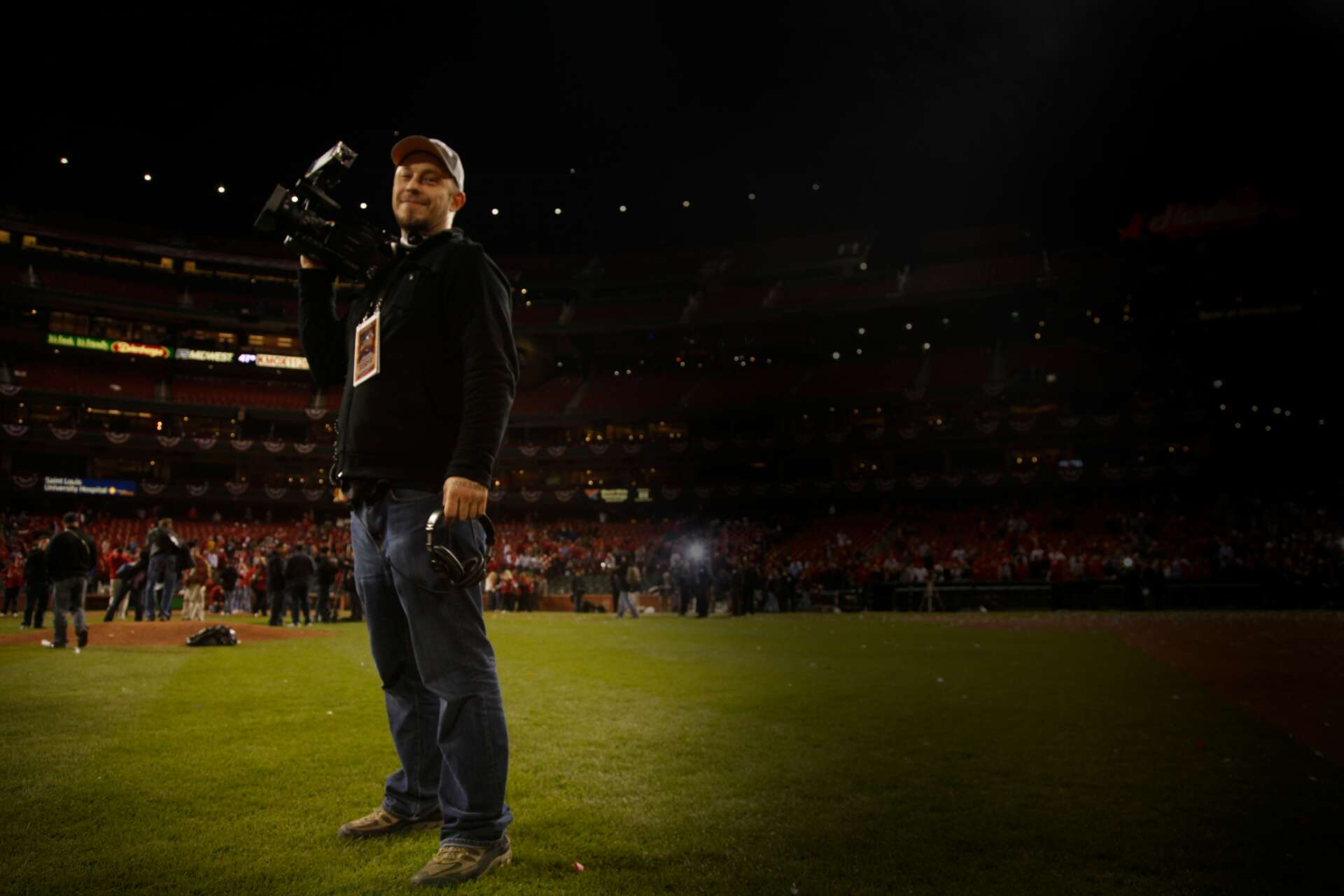
Contact Info:
- Website: www.redlinestudios.net


